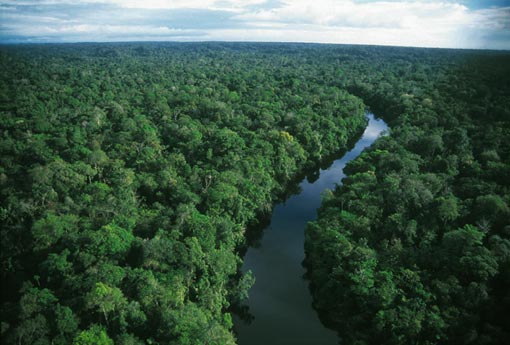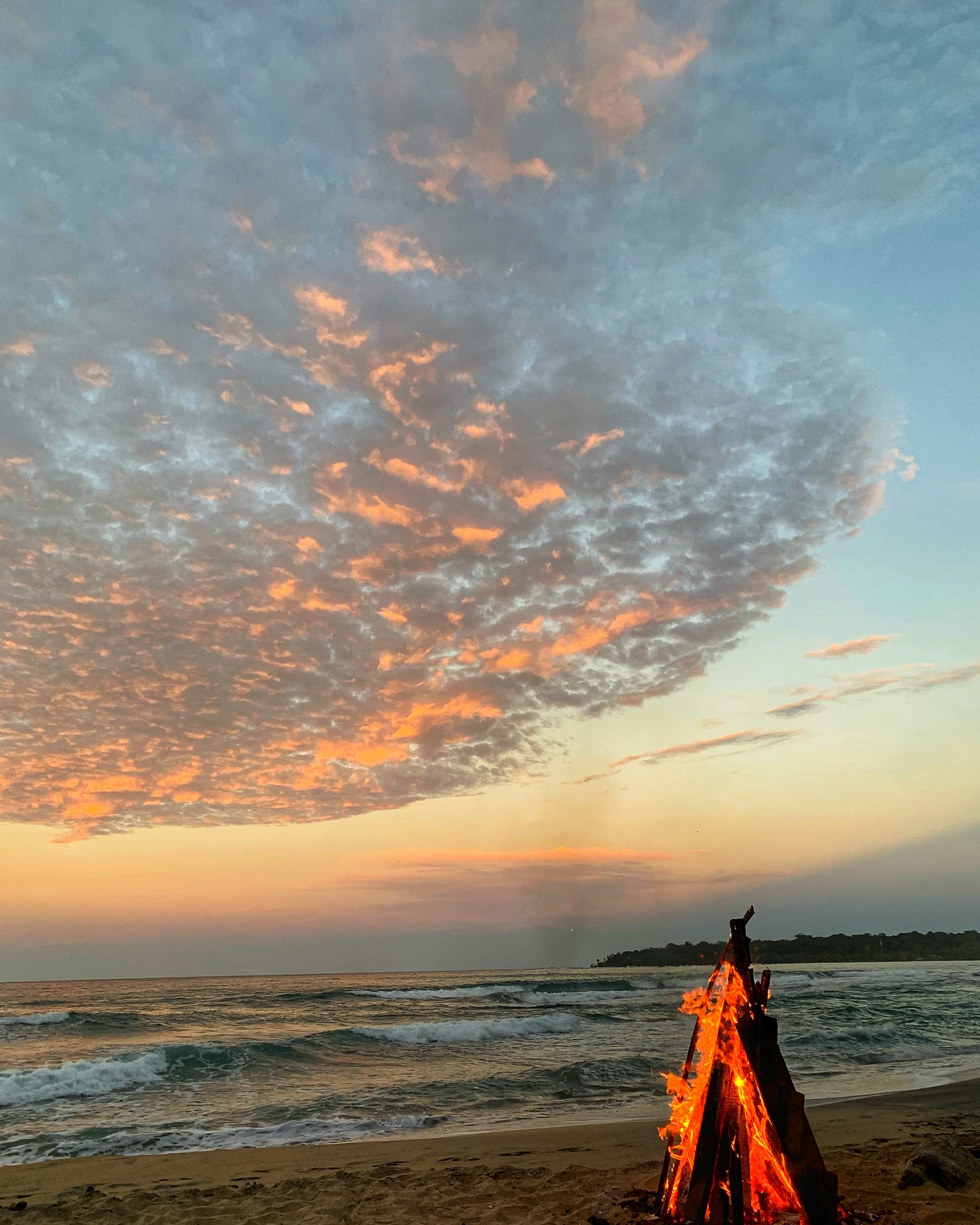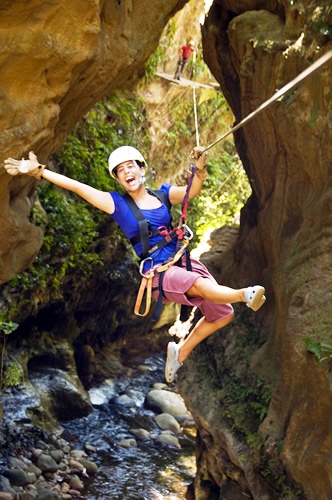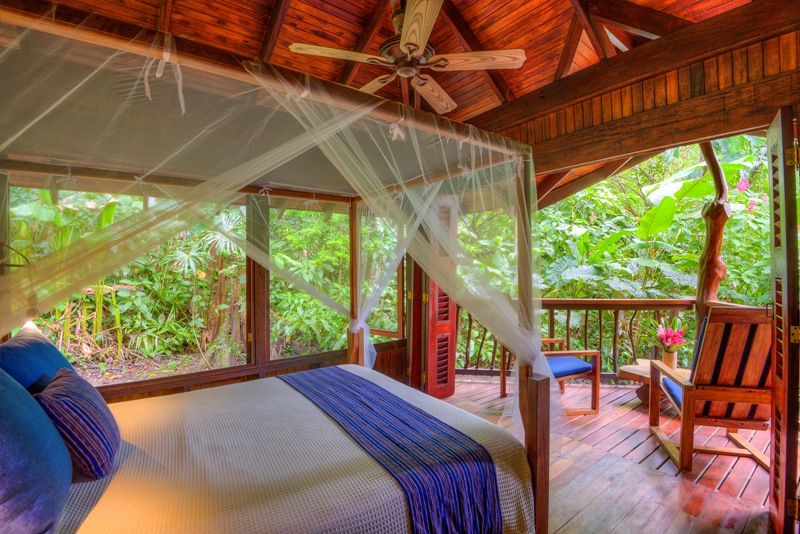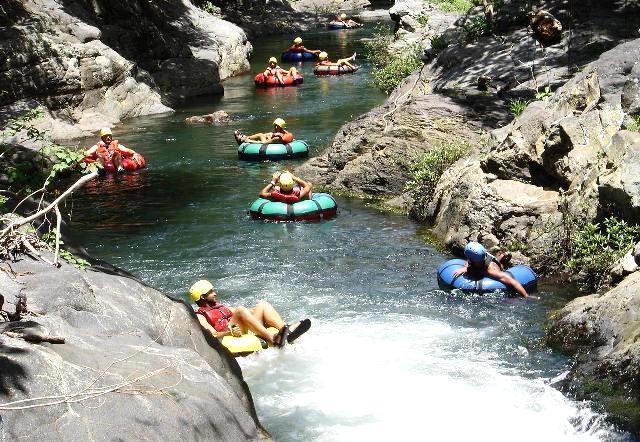Take a deep breath. Now imagine your lung capacity reduced by one-fifth. Find it a bit harder to breathe? What if that lessens?
Now take your focus out to a global view, and you hav e a clear picture of what is happening in the Amazon Rainforest. The Amazon is the largest contiguous tropical forest in the world, and releases 20% of the world’s life-giving oxygen. Today in 2012, due to mostly slash-and-burn deforestation, nearly one-fifth of the Amazon’s forest has been cleared (Amazon Conservation Team).
e a clear picture of what is happening in the Amazon Rainforest. The Amazon is the largest contiguous tropical forest in the world, and releases 20% of the world’s life-giving oxygen. Today in 2012, due to mostly slash-and-burn deforestation, nearly one-fifth of the Amazon’s forest has been cleared (Amazon Conservation Team).
Often described by scientists as the “Earth’s lungs” (albeit in reverse), tropical rainforests take in vast quantities of carbon dioxide and through photosynthesis convert it into clean, breathable air. Tropical forests like the Amazon, spanning 5,500,000 km2 across 40% of South America (including Brazil, Guyana, Suriname, French Guyana, Venezuela, Colombia, Ecuador, Peru and Bolivia), also play a critical role in regulating the Earth’s climate and temperature and store a massive amount of carbon.
 Circling the Earth’s middle like a webbed green belt – between 23.4° latitude north and south of the equator – the Tropics occupy approximately 40% of the Earth’s land surface with widely diverse ecosystems, including some of the driest deserts and wettest forests on the planet. “Containing great stores of biomass, tropical ecosystems represent the largest reservoir of terrestrial carbon. The Tropics also cycle more carbon dioxide and water than any other biome and play important roles in determining Earth’s energy balance, which drives global systems of temperature and precipitation,” states an October 2012 report by the U.S. Department of Energy, Office of Science & Office of Biological and Environmental Research, entitled Research Priorities for Tropical Ecosystems Under Climate Change.
Circling the Earth’s middle like a webbed green belt – between 23.4° latitude north and south of the equator – the Tropics occupy approximately 40% of the Earth’s land surface with widely diverse ecosystems, including some of the driest deserts and wettest forests on the planet. “Containing great stores of biomass, tropical ecosystems represent the largest reservoir of terrestrial carbon. The Tropics also cycle more carbon dioxide and water than any other biome and play important roles in determining Earth’s energy balance, which drives global systems of temperature and precipitation,” states an October 2012 report by the U.S. Department of Energy, Office of Science & Office of Biological and Environmental Research, entitled Research Priorities for Tropical Ecosystems Under Climate Change.
 Tropical forests comprise about half of the Earth’s total forest area. Over the past five years, Brazil has managed to reduce its rate of deforestation by 80%, according to Amazon Conservation Team. Scientists, however, believe we are at a tipping point of deforestation in the Amazon – if we lose much more, the damage may be irreversible. The next 10 years is critical, they say.
Tropical forests comprise about half of the Earth’s total forest area. Over the past five years, Brazil has managed to reduce its rate of deforestation by 80%, according to Amazon Conservation Team. Scientists, however, believe we are at a tipping point of deforestation in the Amazon – if we lose much more, the damage may be irreversible. The next 10 years is critical, they say.
Despite the negative impact of widespread worldwide deforestation, tropical ecosystems continue to benefit the Earth’s atmosphere and climate system by mitigating climatic warming through storing carbon and evaporative cooling, states the U.S. Department of Energy’s report. Of great concern, however, is the vulnerability of tropical ecosystems to rapid shifts in climate change.
 Home to two-thirds of all of the living species on the planet and nearly half of the medicinal compounds we use every day that come from endemic plants, tropical forests are thought to be especially vulnerable to climate change compared to other regions on Earth. Unlike in temperate forests where temperatures fluctuate widely in different seasons, temperatures in tropical forests maintain a relatively narrow thermal range of 24-38 C (75-100 F). Tropical forests also require sufficient moisture to exist, receiving anywhere from 70-400 inches (1.7-10 m) of rain per year. Mess with that, by increasing atmospheric temperatures or changing precipitation patterns, and tropical forests may be pushed into climates never experienced by existing forests … or worse, extended droughts could cause catastrophic death of trees, accelerating global warming even more, according to the U.S. Department of Energy’s climate change report.
Home to two-thirds of all of the living species on the planet and nearly half of the medicinal compounds we use every day that come from endemic plants, tropical forests are thought to be especially vulnerable to climate change compared to other regions on Earth. Unlike in temperate forests where temperatures fluctuate widely in different seasons, temperatures in tropical forests maintain a relatively narrow thermal range of 24-38 C (75-100 F). Tropical forests also require sufficient moisture to exist, receiving anywhere from 70-400 inches (1.7-10 m) of rain per year. Mess with that, by increasing atmospheric temperatures or changing precipitation patterns, and tropical forests may be pushed into climates never experienced by existing forests … or worse, extended droughts could cause catastrophic death of trees, accelerating global warming even more, according to the U.S. Department of Energy’s climate change report.
 The U.S. Climate Change Science Program defines climate change as “a change in the climate (for example, in temperature or precipitation) that takes place over a few decades or less, persists for at least a few decades, and causes substantial disruptions in human and natural systems.” The National Research Council (NRC) in the U.S. reports that abrupt climate change can be regional, hemispheric, or global.
The U.S. Climate Change Science Program defines climate change as “a change in the climate (for example, in temperature or precipitation) that takes place over a few decades or less, persists for at least a few decades, and causes substantial disruptions in human and natural systems.” The National Research Council (NRC) in the U.S. reports that abrupt climate change can be regional, hemispheric, or global.
Researchers from the University of Massachusetts Amherst Climate System Research Center indicate in a 2008 report that highland forests in Costa Rica could be seriously affected by future changes in climate, reducing the number of species in a region famous for its biodiversity. They predict that the area will become warmer and drier as climate change accelerates.
 In the early 1980s, Costa Rica had one of the worst deforestation rates in Latin America. Like the rest of the Central American Isthmus, Costa Rica was once 99% forest, but forest cover steadily diminished from 85% in 1940 to 24% in 1985 (mostly cut for timber and cattle production), according to studies by the Tropical Scientific Center and the University of Costa Rica. Through education and government intervention, by 1997, forest cover increased to 40.4%. Today, a heroic popular tree-planting effort, among other measures, has brought that number up to nearly 47% (2,391,000 hectares), according to the Food and Agriculture Organization of the United Nation’s State of the World’s Forests annual report.
In the early 1980s, Costa Rica had one of the worst deforestation rates in Latin America. Like the rest of the Central American Isthmus, Costa Rica was once 99% forest, but forest cover steadily diminished from 85% in 1940 to 24% in 1985 (mostly cut for timber and cattle production), according to studies by the Tropical Scientific Center and the University of Costa Rica. Through education and government intervention, by 1997, forest cover increased to 40.4%. Today, a heroic popular tree-planting effort, among other measures, has brought that number up to nearly 47% (2,391,000 hectares), according to the Food and Agriculture Organization of the United Nation’s State of the World’s Forests annual report.
However, while deforestation rates of natural forest have dropped considerably, Costa Rica’s remaining forests still face threats from illegal timber harvesting in protected areas and taking land for agriculture and cattle pasture in unprotected zones. The big business of ecotourism has become one of the country’s most important sources of revenue and will hopefully push reforestation and greater protection measures. Costa Rica’s leaders have set forth an ambitious goal to become the first country to be carbon neutral by 2021.
José Salazar, Research Coordinator and Herpetologist at Veragua Rainforest Research & Adventure in Costa Rica’s Caribbean mountains, says he’s already seeing distressing signs of climate change.
“Last year was the driest in 50 years in Limón (main port city on Costa Rica’s Caribbean Coast),” Salazar said. “In 2011 we noted drastically the effects of the warming of the planet. The rainforest around Veragua took on characteristics of a tropical dry forest instead of a rainforest for lack of rain. We’re already seeing the change in the climate.”
 Veragua Rainforest is a 1,300 hectare (3,212 acre) biology research center and adventure center, located about an hour inland from the historic Caribbean port town of Limón. It is an area of breathtaking tropical rainforest in the foothills of the Talamanca Mountain Range bordering the La Amistad (“Friendship”) International Park, the country’s largest and most remote national park that is shared by both Costa Rica and Panama.
Veragua Rainforest is a 1,300 hectare (3,212 acre) biology research center and adventure center, located about an hour inland from the historic Caribbean port town of Limón. It is an area of breathtaking tropical rainforest in the foothills of the Talamanca Mountain Range bordering the La Amistad (“Friendship”) International Park, the country’s largest and most remote national park that is shared by both Costa Rica and Panama.
Salazar and his team of biologists, in partnership with the University of Costa Rica, study and work to preserve the area’s population of frogs, snakes, lizards, iguanas, insects, butterflies and birds. “We use the park as a model for a pristine (forest) site in excellent conditions,” Salazar said.
 Studying the area’s 55 species of frogs – the most diverse in the entire country – will indicate any early warning signs of serious climate change, remarks Salazar, a specialist on amphibians and reptiles. “The principle group that measures any climate change is the amphibians, because they absorb any chemicals by their skin,” he said. “Rain cycles affect frogs’ reproductive cycles. Some frogs only reproduce one or two times per year, usually in rainy season and with a full moon. If it doesn’t rain like it should, they don’t reproduce.”
Studying the area’s 55 species of frogs – the most diverse in the entire country – will indicate any early warning signs of serious climate change, remarks Salazar, a specialist on amphibians and reptiles. “The principle group that measures any climate change is the amphibians, because they absorb any chemicals by their skin,” he said. “Rain cycles affect frogs’ reproductive cycles. Some frogs only reproduce one or two times per year, usually in rainy season and with a full moon. If it doesn’t rain like it should, they don’t reproduce.”
 So far in 2012, it’s not raining like it normally does, but Salazar said the species are tolerating the drop in moisture for now. It may reach a limit if temperatures continue to increase, however, hitting a breaking point when species begin to die, he said. To help sustain the frogs and other species, Veragua has created artificial habitats with all natural elements so the animals can thrive and reproduce. Using natural plants, earth and water, it’s like they’ve taken a real section of the forest and put a bubble over it.
So far in 2012, it’s not raining like it normally does, but Salazar said the species are tolerating the drop in moisture for now. It may reach a limit if temperatures continue to increase, however, hitting a breaking point when species begin to die, he said. To help sustain the frogs and other species, Veragua has created artificial habitats with all natural elements so the animals can thrive and reproduce. Using natural plants, earth and water, it’s like they’ve taken a real section of the forest and put a bubble over it.
Many places in the rest of the world may have wished they had their own bubble for 2012. As the planet this year experienced record heat, increased drought and fires, unprecedented ice melt, and late season Hurricane Sandy turned “superstorm” that surprised everyone by ravaging the East Coast of the U.S. and six Caribbean countries, and other similar extreme weather anomalies, climatologists have been forced to reconsider previous climate change projections and research techniques. The year before, 2011 rocked us with shocking frequency in irregular weather and disasters, all pointing to climate change.
 The U.S. National Research Council just released a report earlier in November 2012 on the link between global climate change and national security. The scientific study details how climate change is putting new social and political stresses on societies around the world. The report by the Congressional-chartered research group says the consequences of climate change – including rising sea levels, more frequent and severe floods, droughts, forest fires, and insect infestations – present security threats just as serious as those posed by terrorist attacks. Extreme weather events need to be anticipated where and when they will hit, and assessed in terms of their potential to destabilize countries and regions around the world, the report declares.
The U.S. National Research Council just released a report earlier in November 2012 on the link between global climate change and national security. The scientific study details how climate change is putting new social and political stresses on societies around the world. The report by the Congressional-chartered research group says the consequences of climate change – including rising sea levels, more frequent and severe floods, droughts, forest fires, and insect infestations – present security threats just as serious as those posed by terrorist attacks. Extreme weather events need to be anticipated where and when they will hit, and assessed in terms of their potential to destabilize countries and regions around the world, the report declares.
 The pivotal player still remains the Tropics. Climate scientists at Texas A&M University have been studying past temperature changes in the tropical Atlantic Ocean’s subsurface to help uncover an important climate connection between the Tropics and the high latitude North Atlantic. Their new findings are in the current issue of PNAS (Proceedings of the National Academy of Sciences).
The pivotal player still remains the Tropics. Climate scientists at Texas A&M University have been studying past temperature changes in the tropical Atlantic Ocean’s subsurface to help uncover an important climate connection between the Tropics and the high latitude North Atlantic. Their new findings are in the current issue of PNAS (Proceedings of the National Academy of Sciences).
“Evidence is mounting that the Earth’s climate system has sensitive triggers that can cause abrupt and dramatic shifts in global climate,” said geological oceanographer Matthew Schmidt of Texas A&M University, who co-authored the report. “When the tropics warmed, it altered climate patterns around the globe.”
Veragua Rainforest Research & Adventure is a one-stop rainforest adventure and not-to-be-missed when visiting Costa Rica’s Caribbean area. There are walking trails through the rainforest, a river and waterfall, an aerial tram, a canopy zip line tour, and the biology research station and wildlife habitats, plus a restaurant, café and souvenir shop. Veragua Rainforest Research & Adventure is open Tuesday to Saturday, from 8:00 am to 3:00 pm. Admission is $66 for adults and $55 for children/students; children under age 4 get in free. The admission price includes all activities and attractions, with the exception of the canopy tour – which is an additional fee. Lunch in their restaurant is $10 per person. Veragua is located 40 minutes from Limón and 2 ½ hours from San José, in Brisas de Veragua, 12 km south from the Liverpool entrance on the highway to Limón.
By Shannon Farley



